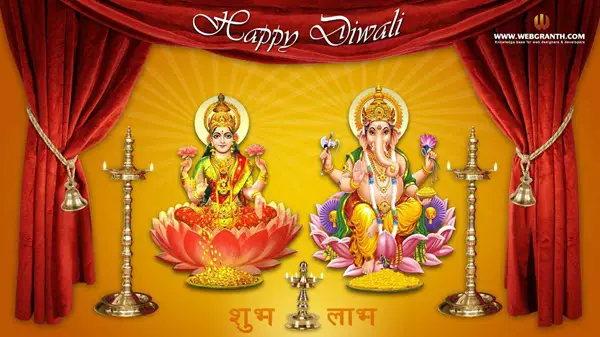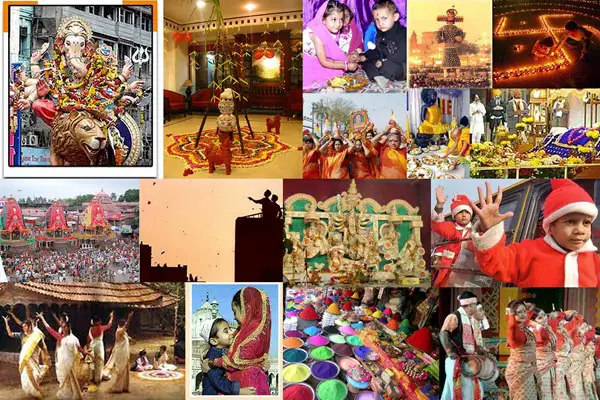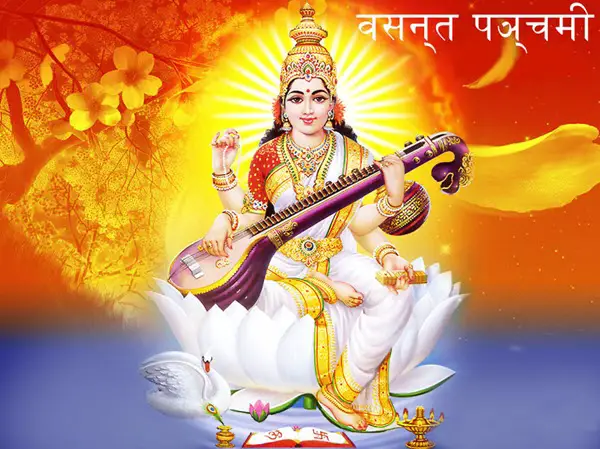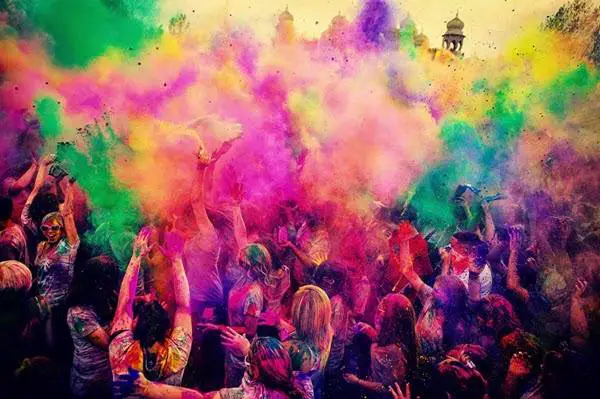The Hindu religion has a rich tradition of festivals and cultural events. One tremendously popular festival that acknowledges and celebrates the love between brothers and sisters is Raksha Bandhan, or “Rakhi.”
Raksha Bandhan is originally a Hindu festival that has attained the status of a secular festival and is celebrated with great enthusiasm in different parts of India and abroad, particularly in Nepal and Mauritius.
Non-Resident Indians also celebrate the festival of Raksha Bandhan around the whole world. According to the Hindu Lunisolar Calendar, the festival of Raksha Bandhan is celebrated on the full moon day in the Shravan month (Shravan Poornima). It typically falls in August.
Table of Contents
Raksha Bandhan Date 2024
Raksha Bandhan will be celebrated on 19th August 2024, Monday
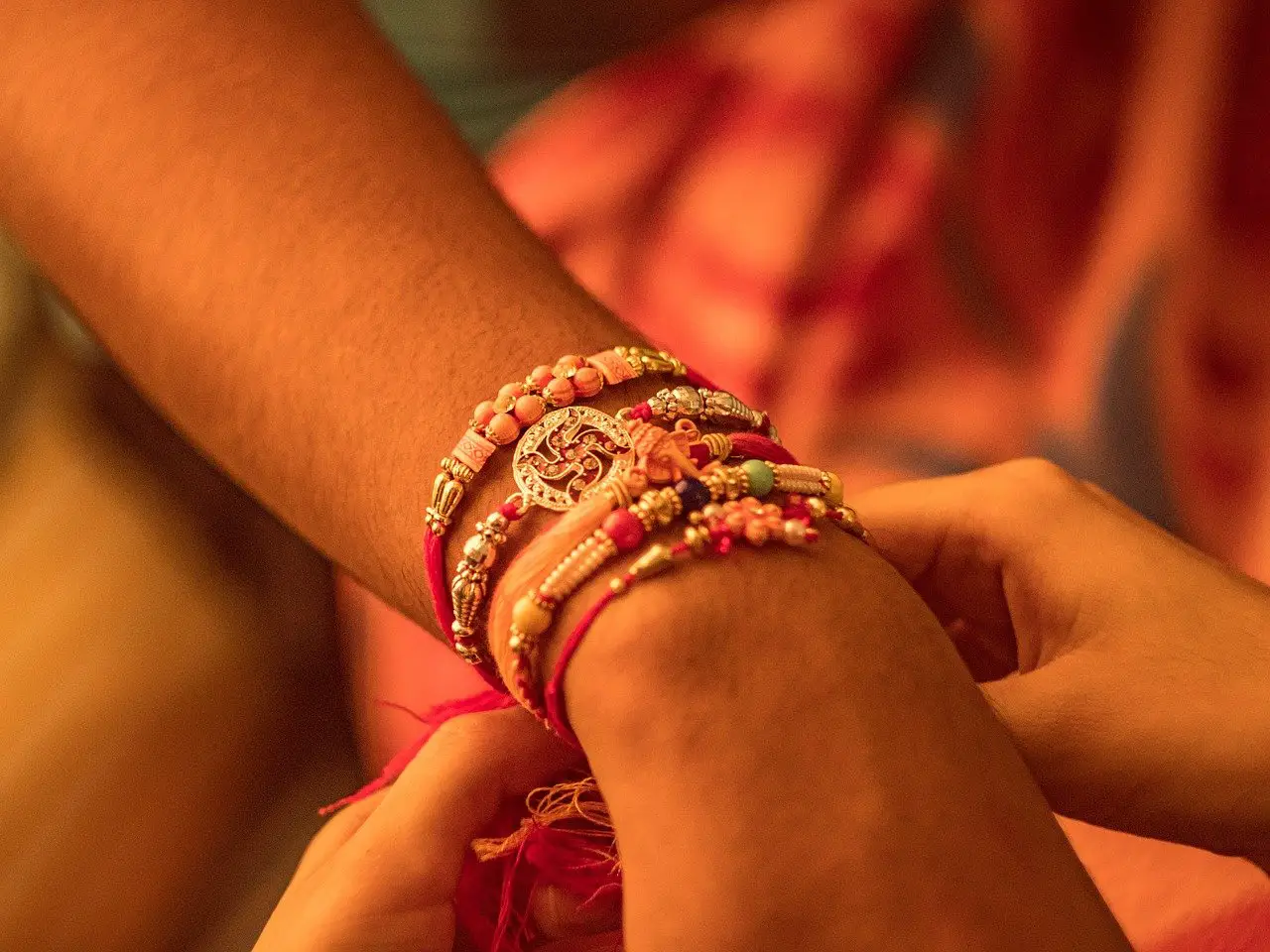
Raksha Bandhan marks the occasion when sisters express their love and pray for their brother’s well-being. In Raksha Bandhan’s return, the brothers vow to protect and care for their sisters. The occasion is typically marked whereby sisters tie a sacred knot (Rakhi) on their brother’s wrist. They also adore the forehead of their brothers with “Tilak.” Religious hymns and prayers are sung, and “Aarti” is performed, which forms a prime focus of this religious festival.
Why is Raksha Bandhan Celebrated?
The Hindu religion is woven around festivals and cultural events. Therefore, festivities are an important aspect of the Hindu religion. Hindus, from times immemorial, have placed the love, affection, and bond between brothers and sisters at the highest pinnacle. They celebrate the Raksha Bandhan festival to celebrate this unique bond of love between brothers and sisters.
Raksha Bandhan means “the tie or knot of protection.” It marks the love, harmony, and duty between brothers and sisters. On this occasion, sisters pray for the good being of their brothers, and brothers, in turn, take a pledge to protect and take care of their sisters in times of need and under all circumstances.
Ancient Hindu scriptures describe innumerable stories of Raksha Bandhan and Rakhi. These stories tell us the origin of the Raksha Bandhan festival and why it has become an important festival that we celebrate with so much devotion, joy, and enthusiasm.
Let us dwell on some of the main stories at the core of this beautiful Rakhi or Raksha Bandhan festival.
Indra Dev
According to the ancient Hindu Scripture, Bhavishya Purana, once Devi Sachi, wife of Indra Dev, was much grieved by his husband’s disgrace, Indra Dev, at the hands of the powerful demon king Bali. She then approached Lord Vishnu and prayed before Him to help her husband. Lord Vishnu gave Sachi a holy bracelet and told her to tie that bracelet to Indra Dev’s wrist. Sachi did so and tied that divine bracelet around the wrist of Indra.
Armored with the holy bracelet and the blessings of Sachi, Indra Dev then defeated the evil forces and regained the throne of heaven. The story suggests that the holy thread of Raksha Bandhan has protective powers that guard men against evil forces and difficulties. The story also suggests that the sacred thread of Raksha Bandhan was not just limited to the brother-sister relationship. It was beneficial to safeguard the husband-wife relationship and bestow them with protective powers.
King Bali and Goddess Lakshmi
This legend is derived from the ancient Hindu scripture Vishnu Purana. According to this legend, after King Bali was defeated at Lord Vishnu’s hands, he requested Him to live in his palace with his consort Goddess Lakshmi. Lord Vishnu happily granted this request by Bali and stayed in his court. However, Goddess Lakshmi was unhappy with Lord Vishnu’s decision and wanted to return to Vaikuntha Dham.
So, Goddess Lakshmi went to Bali, tied a Rakhi around Bali’s wrist, and made him a brother. In return, Bali accepted Goddess Lakshmi as his sister and asked her what gift she would like to have from him. At this, Goddess Lakshmi said to Bali to free Lord Vishnu from his request to live in his palace so that she may return to Vaikuntha Dham with her husband, Lord Vishnu. Bali accepted her request, and Goddess Lakshmi returned to Vaikuntha with Lord Vishnu. This story lays the foundation of the age-old love, bond, and care between a brother and sister.
Krishna and Draupadi
An incident in Mahabharata aptly describes the love and gratitude in the relationship between brother and sister. Once Krishna cut his finger while slaying the cruel Shishupal. Draupadi immediately bandaged Krishna’s finger by tying a piece of cloth she tore off from his sari.
Krishna was overwhelmed by Draupadi’s loving act and promised he would help her whenever she needed him. Indeed Krishna came to her help when Draupadi prayed to him and granted him unlimited cloth during the famous episode when Dushsasana, the brother of Duryodhana, tried to undress her.
Some Historical References
Raksha Bandhan is an ancient festival that was popular in the olden days. Many historical references bring out the importance, relevance, and beauty of this glorious festival of Rakhi, which celebrates the love between brothers and sisters. Let us see some historical references related to Rakhi or Raksha Bandhan.
Alexander the Great and King Puru
It so happened that when Alexander the Great invaded India in 326 B.C., his wife Roxana sent a sacred thread to King Puru, requesting him not to harm his husband during battle. According to tradition, King Puru gave full respect to the holy thread sent to him by Roxana and promised that he would not harm Alexander. When there was a great fight between Alexander and Puru on the battlefield, Puru saw the thread on his wrist and restrained himself from attacking Alexander personally.
Rani Karnavati and Emperor Humayun
This episode date back to 1535 C.E., when Rani Karnavati, the widowed queen of the King of Chittor, had sent a Rakhi to Emperor Humayun, asking him to protect his kingdom from the invasion of Bahadur Shah, the Sultan of Gujarat. Emperor Humayun was much moved by the feelings of Rani Karnavati and accepted her as his sister.
He immediately sent his troops to Chittor to protect Rani Karnavati and his kingdom from Bahadur Shah’s attack. However, Humayun was too late, and Bahadur Shah was able to sack Rani’s fortress.
How is Raksha Bandhan celebrated?
Although there are some regional differences in the celebration of the Raksha Bandhan festival in India, some typical rituals are practiced throughout India. So, let us see how Raksha Bandhan is celebrated.
Preparations for Raksha Bandhan
Preparations for Raksha Bandhan begin days or weeks before the actual Raksha Bandhan day. Women shop for Rakhi, ceremonial thread, sweets, clothes, and other types of gifts for their brothers and friends. Rakhi in the form of a colorful woven thread is preferred chiefly; however, other Rakhis with amulets and decorations on top of it are also popular these days. Some women also prepare their own Rakhi. Apart from women, men also shop for gifts for their sisters.
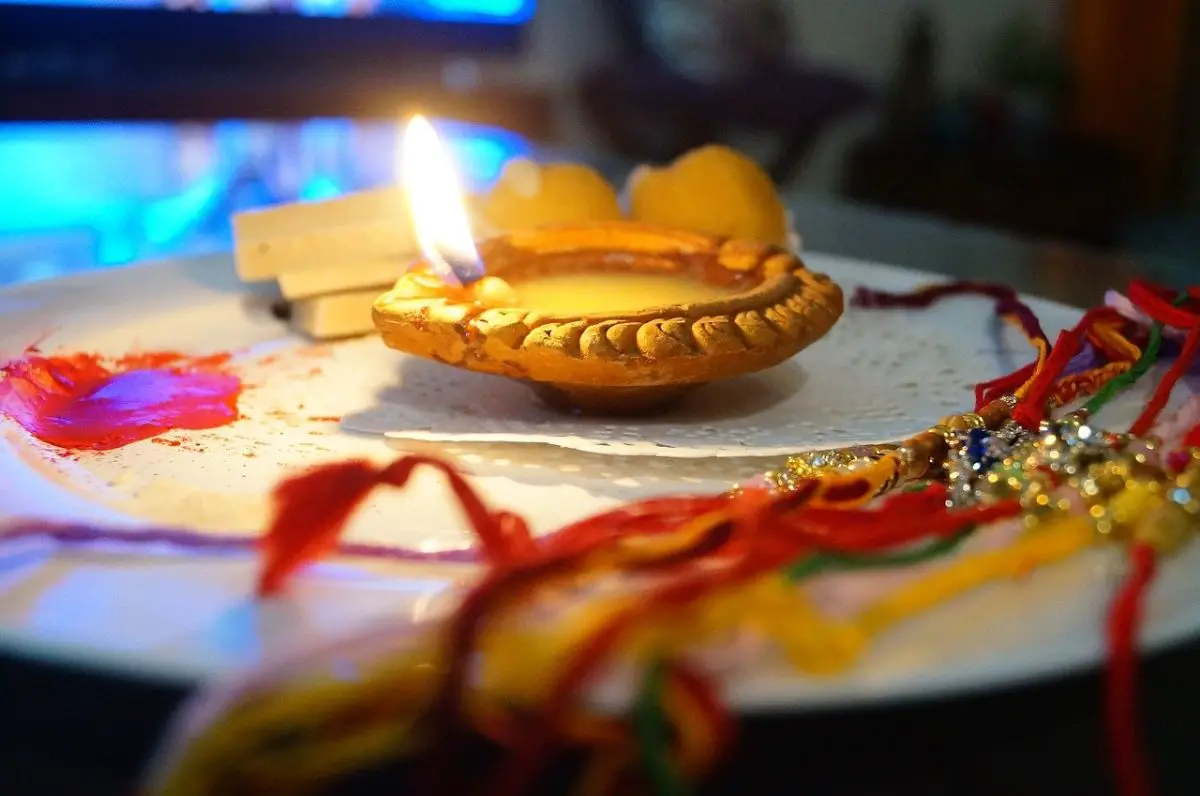
Rakhi Ritual
On the day of Raksha Bandhan, brothers, and sisters actively participate in the Rakhi Rituals in front of their parents and grandparents. Sometimes, sisters mail Rakhi if they cannot attend the Rakhi Festival due to a vast geographic distance. Rakhi Rituals begin by lighting a lamp (Diya).
Then, a Pooja Thali is prepared to keep Rakhi, sweets, gifts, and materials for putting “Tilak” on their brothers’ foreheads. Next, the sister and brother face each other, and then the sister ties the sacred thread of love and protection (Rakhi) on her brother’s wrist.
Following it up with Prayers, Aarti, and Sweets
After typing up the Rakhi on her brother’s wrist, the sister sings hymns and prayers for her brother’s well-being, prosperity, good health, and happiness. Usually, sisters perform Aarti while chanting prayers in which a tray with the lighted lamp is ritually rotated around the brother’s face. The prayer may be a self-composed note or one of the Rakhi prose or poems.
Rakhi Prayer:
“May the Lord of all beings protect you,
May the one who creates, preserves, and dissolves life protect thee,
May Govinda guard thy head; Kesava, thy neck; Vishnu, thy belly; the eternal Narayana, thy face, thine arms, thy mind, and faculties of sense;
May all negativity and fears, spirits malignant and unfriendly, flee thee; May Rishikesa keeps you safe in the sky; and Mahidhara, upon the earth.”
After performing prayers and Aarti Ceremony, the sister applies Tilak or Tika on her brother’s forehead. After the Tilak ceremony, the brother vows to protect his sister under all circumstances. Then sister offers her brother sweets, dry fruits, and other seasonal delicacies.
Gifts and Hugs
The Rakhi Rituals culminate with brothers giving gifts to their sisters. Usually, brothers send gift cards, money, clothes, jewelry, and other gift items to their sisters. They also present their sisters with sweets and other seasonal delicacies. Finally, all the family members congratulate them on this unique brother-sister love and protection celebration. Brothers wear Rakhi on the entire day of Raksha Bandhan as a mark of respect for Raksha Bandhan celebrations.
All-in-all, Raksha Bandhan is a pious festival that establishes and promotes the bond of love and protection between brothers and sisters. Therefore, it is a day celebrated with tremendous joy, enthusiasm, and festivity.

